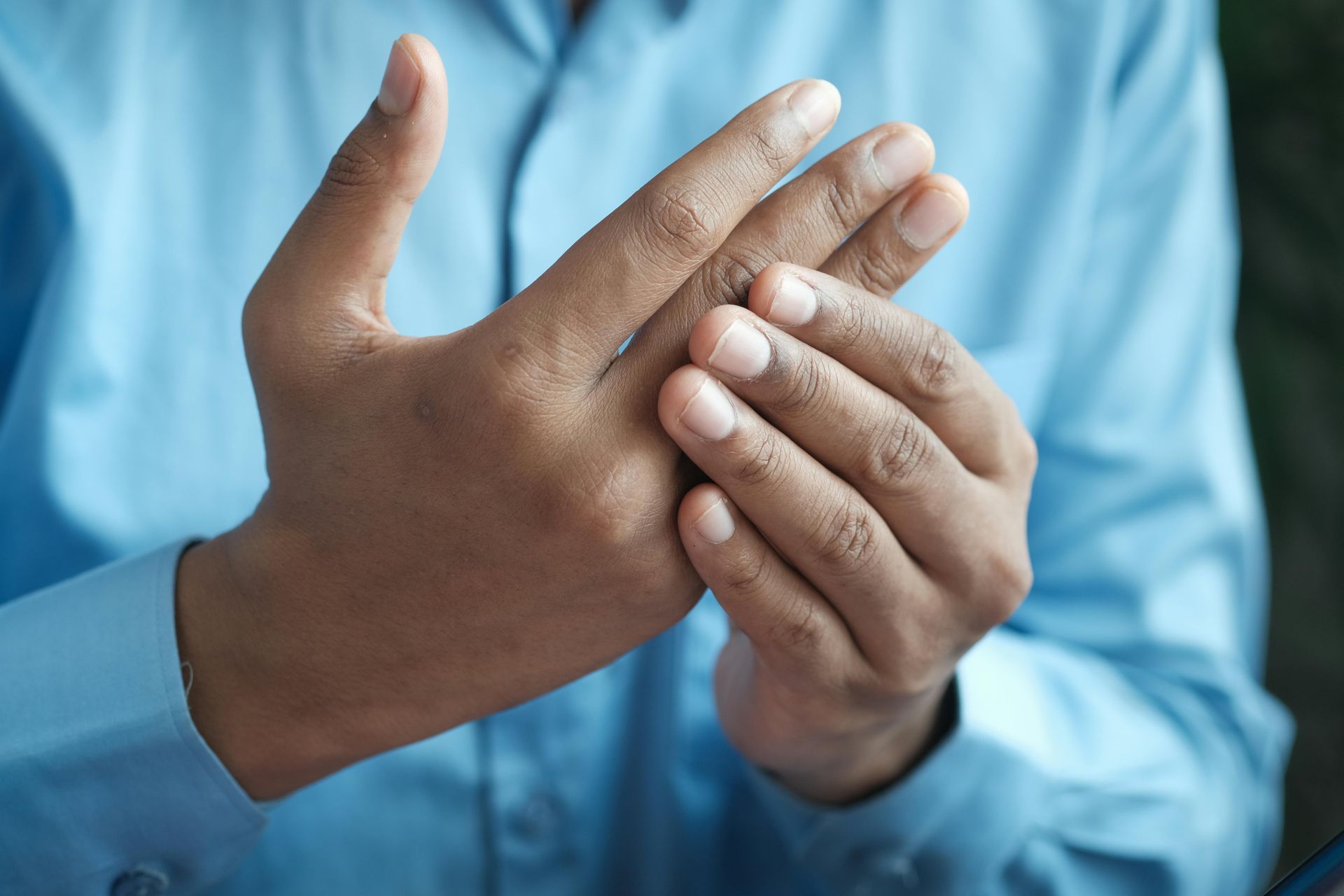How Regular Treatment Helped Manage TMJ and Upper Back Issues

Understanding TMJ Syndrome and Upper Back Pain
TMJ syndrome is a condition that affects the jaw joint and muscles around it, often leading to headaches, jaw clicking, and facial pain.
This client experienced
TMJ symptoms that worsened with stress, including tightness in the masseter (jaw) muscles, jaw clicking, and occasional headaches.
She also had chronic tension in her upper back, neck, and shoulders, which was likely exacerbated by her posture and household duties.
She reported additional symptoms of anxiety, depression, and digestive issues, which contributed to her overall stress. Managing these symptoms required a comprehensive approach that addressed both her physical and emotional needs.
Initial Assessment and Treatment Plan
When she first visited Good Health Group Clinic on 28 August, 2024, Sam conducted a thorough assessment, noting tightness in her upper back and neck as well as around her pectoral muscles and biceps. This tightness contributed to a rounded shoulder posture, further aggravating her TMJ and upper back symptoms.
To relieve her discomfort, Sam implemented a customised treatment plan that included:
- Deep Tissue Massage (DTM): Targeted areas included her lower back, trapezius, neck, infraspinatus, levator scapulae, glutes, and hamstrings to address chronic tension.
- Dry Needling (DN): Applied to the quadratus lumborum, mid-trapezius, cervical muscles, and infraspinatus to relieve deeper muscle tension.
- Cupping: Used on the mid and upper trapezius and infraspinatus to improve circulation and release tightness.
- Instrument-Assisted Soft Tissue Mobilisation (IASTM): Performed on the lower back, trapezius, and cervical area to break down scar tissue and improve mobility.
- Trigger Point Therapy (TrP): Focused on the medial hamstrings, gastrocnemius, tibialis posterior, masseter, and pterygoid muscles to reduce TMJ tension.
This comprehensive treatment aimed to alleviate her jaw discomfort, release upper back tension, and improve her overall range of motion. Additionally, Sam provided her with shoulder and chest mobility exercises to perform daily, supporting her progress at home.
11th September, 2024: Addressing TMJ and Upper Back Tension
During this visit, she reported
jaw clicking and
upper back tension, along with a
headache. Sam performed
intraoral trigger point release on her masseter muscle, targeting her TMJ symptoms with active jaw movement to enhance effectiveness. The treatment also included
deep tissue massage and trigger point therapy
for her upper traps, rhomboids, and temporalis muscles. Her exercise plan was modified to include a pectoral stretch to support upper body mobility.
25th September, 2024: Shoulder Tension and Family Commitments
With family obligations for a special occasion, her gym routine was temporarily replaced by regular walks. She presented with right-sided shoulder tension and neck stiffness. Treatment was adjusted to include deep tissue massage for her trapezius and cervical muscles, along with trigger point therapy for the temporalis muscle. A new exercise plan was provided to incorporate more upper body stretching and mobility exercises.
9th October, 2024: Managing Increased Stress
After a period of increased stress due to family gatherings and additional responsibilities, her TMJ symptoms had intensified, with increased neck and shoulder tightness. Sam focused on deep tissue massage for her lower back, neck, and upper back, and performed intraoral trigger point therapy for the temporalis muscle to relieve jaw tension. Her exercise plan remained unchanged, emphasising the importance of consistency.
Customised Exercise Program for TMJ and Upper Back Support
To complement her treatment sessions, Sam developed a personalised exercise program to help manage her TMJ and upper back pain between visits. The exercises focused on enhancing mobility, improving posture, and reducing jaw and upper back tension:
Mobility Exercises
- Arm Swings: 15-20 swings, 2-3 sets
- Rhomboid Stretch: 20-30 seconds, 2-3 sets
- Extended Puppy Pose: 20-30 seconds, 2-3 sets
- Thoracic Cat Camel: 10-12 reps, 2-3 sets
Strength and Stability
- Scapular Protraction and Retraction against the Wall: 8-10 reps, 3 sets
- Kneeling Scapular Push-Ups: 8-10 reps, 3 sets
- Bird Dog: 8-10 reps, 3 sets
- Foam Roller Wall Slide: 8-10 reps, 3 sets
Daily Breathing Exercise
- Rock Back Breathing: 10 deep breaths, 3 sets
Since she maintained a regular gym routine, Sam recommended integrating these exercises into her workouts to reinforce posture, upper body flexibility, and TMJ relief.
Outcome and Reflections
Through consistent bi-weekly treatments and an evolving exercise plan, she has seen a significant reduction in her neck and shoulder pain. Now, she visits Sam every two weeks to manage her ongoing symptoms and maintain her upper body mobility and jaw health.
A combination of deep tissue massage, trigger point therapy, dry needling therapy, and intraoral release techniques has helped relieve her TMJ tension, while mobility exercises support her shoulder and upper back alignment.
Conclusion
This case highlights the benefits of a holistic approach in managing TMJ syndrome and chronic upper back pain, particularly for clients balancing physical and emotional stress. Regular follow-ups with Sam allow her exercise plan to be adjusted according to her lifestyle and stress levels, ensuring her ongoing progress and comfort.
If you’re experiencing TMJ or upper back pain, consider exploring a customised treatment plan that incorporates both in-clinic care and at-home exercises. A comprehensive approach can make a world of difference in managing pain and achieving lasting relief.
Ready to Find Relief from TMJ and Upper Back Pain?
Our personalised treatment plans can help you manage pain, improve mobility, and get back to feeling your best.
Whether you're dealing with TMJ issues, back tension, or other discomforts, we’re here to support you.
Book your appointment today and start your journey to relief!
Blogs














